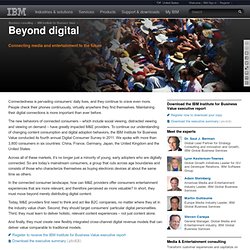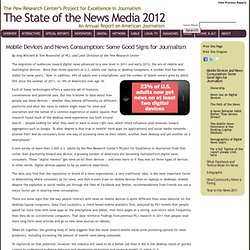

The 4 distinct personalities of connected consumers. Connected consumer.

It's nearly impossible to separate these two words today. Whether it's checking out online reviews of products on a tablet, comparing notes with friends on Facebook about what to buy, or pulling up a smart phone app to see whether a nearby store has a product on the shelves -- or multitasking several things at once -- everything about what it means to be a consumer is changing. Even the personality of the consumer, it turns out.
In fact, during the past few years, four very distinct digital consumer personalities began emerging as the speed with which people adopted an ever wider variety of digital gadgets and social groups, apps, and online services ramped up, according to a new survey by the IBM Institute of Business Value. The study surveyed more than 3,800 consumers in China, France, Germany, Japan, the U.K., and the U.S. At the same time, all four of these new personalities share the same expectation, which is instant access on their own terms. Efficiency experts. Internet Statistics & Social Media Usage. Beyond digital - Connecting media and entertainment to the future. Connectedness is pervading consumers’ daily lives, and they continue to crave even more.

People check their phones continuously, virtually anywhere they find themselves. Maintaining their digital connections is more important than ever before. The new behaviors of connected consumers – which include social viewing, distracted viewing and viewing on demand – have greatly impacted M&E providers. To continue our understanding of changing content consumption and digital adoption behaviors, the IBM Institute for Business Value conducted its fourth annual Digital Consumer Survey in 2011. We spoke with more than 3,800 consumers in six countries: China, France, Germany, Japan, the United Kingdom and the United States.
Across all of these markets, it’s no longer just a minority of young, early adopters who are digitally connected. In the connected consumer landscape, how can M&E providers offer consumers entertainment experiences that are more relevant, and therefore perceived as more valuable? The 4 distinct personalities of connected consumers. Broadcast moves beyond the TV set as 17% of consumers get network content on multiple screens. People who watch a network’s video online also spend 25 percent more time watching that network on their television sets, according to a new comScore study.

From the report: Ten thousand people participated in the comScore study. That finding comes from one of the first studies using a new method that examines how a single group of people consume video across TV, the Internet and mobile devices. The results show that TV networks, on average, are reaching more than a quarter of their total audiences via mobile or Internet media, and 11 percent are digital-only consumers. Among news, sports and youth-oriented networks, up to 30 percent of the audience was reached through multiple devices during the five-week study. TV networks reach 17 percent of their audience across both TV and computer screens, and another 11 percent are digital-only. Another interesting finding: 61 percent of consumers used the Internet at the same time as they watched TV at some point during the study.
Mobile Devices and News Consumption: Some Good Signs for Journalism. By Amy Mitchell & Tom Rosenstiel of PEJ, and Leah Christian of the Pew Research Center Each of these technologies offers a separate set of features, conveniences and potential uses.

But less is known to date about how people use these devices — whether they behave differently on different platforms and what the move to mobile might mean for news and journalism and the notion of a common experience or public square. Past research found much of the desktop news experience was built around search — people looking for what they need or want to know right now, which tilted influence (and revenue) toward aggregators such as Google. To what degree is that true in mobile?
Have apps (or applications) and social media networks altered that? A new survey of more than 3,000 U.S. adults by the Pew Research Center’s Project for Excellence in Journalism finds that rather than gravitating toward one device, a growing number of Americans are becoming multiplatform digital news consumers. Ownership. State of the Media: U.S. Digital Consumer Report. Born sometime between the launch of the VCR and the commercialization of the Internet, Americans 18-34 are redefining media consumption with their unique embrace of all things digital.

According to Nielsen and NM Incite’s U.S. Digital Consumer Report, this group—dubbed “Generation C” by Nielsen—is taking their personal connection—with each other and content—to new levels, new devices and new experiences like no other age group. Platforms For Digital Access Consumers have more choices than ever for accessing their digital content. As more devices become increasingly connected, the ability to access the same pictures, videos or music files across multiple devices has become a valuable feature. Cross-Platform Video Engagement With an array of online video content to choose from, consumers increased their monthly online video time in 3Q 2011 by 7 percent from the same period last year.
Living Online - US - July 2012.